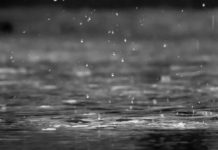ILOILO City – The Bureau of Fisheries and Aquatic Resources (BFAR) in Western Visayas has issued a warning against eating dead fish in coastal areas contaminated by bunker fuel from a barge damaged by an explosion last week.
Remia Aparri, BFAR regional director, said an undetermined volume of dead milkfish (bangus) fingerlings in fish cages were reported in the waters off Barangay Hoskyn in the capital town of Jordan, Guimaras.
She explained that milkfish in fish pens are mainly prone to the threat of leaked bunker oil since they cannot swim out to the open sea.
Aparri said apart from Barangay Hoskyn, as of yesterday they have not yet received reports of fish kill from other coastal areas in this city and Iloilo province.
The latest Philippine Coast Guard estimate of the volume of bunker oil that spilled out of the ruptured tank of AC Energy’s power barge in Bo. Obrero in Lapuz district was at 251,000 liters, reaching as far as 23 Guimaras’ coastal barangays and the northern coastal towns of Dumangas and Leganes in Iloilo province.
According to Aparri, the BFAR is set to conduct a sample test for laboratory analysis of fish samples available in various markets in the city to ensure these are safe for consumption.
“We will coordinate with the Department of Science and Technology to check kon may presence sang bunker fuel,” Aparri said.
She also noted that the oil spill has already breached about two to three hectares of mangrove areas in Barangay Bo. Obrero and Dumangas.
Mangrove trees are known for storing more carbon compared to other trees, which is valuable in the fight against global warming.
Aside from being a breeding ground for several marine life, mangrove trees are also good defenders during storm surges and serve as effective infiltration systems for agriculture.
Aparri called for the immediate cleanup of spilled bunker fuel to save aquatic life beneath mangrove roots.
“Gina-consider naton nga isa ka critical habitat ang mangrove trees kay dira nagakaon, breed and spawn ang fish. Kon natabunan sang bunker fuel ang magagmay nga mga aquatic organism mapatay ni sila kay indi sila makahalin,” the BFAR official said.
On July 3, a power barge operated by the energy arm of Filipino conglomerate Ayala Corporation spilled nearly 270,000 litres of bunker fuel off the coast of Iloilo City.
Power barges are self-contained, floating power plants that private companies deploy to address recurring electricity shortages in the Visayas grid.
Initial findings revealed that the oil spill was caused by a rupture in the barge’s fuel tank. The company said it was able to contain the leak at 10 pm, about seven hours after the incident occurred, after 170 combined personnel of the company and the coast guard were deployed.
Smoke from the bunker fuel forced some 255 families to temporarily evacuate to a nearby elementary school as they complained of difficulty of breathing, sore throat and nasal congestion.
Activists blasted the incident, which affected the livelihoods of thousands of fishermen.
Just off Iloilo’s southeast coast is the island province of Guimaras.
Iloilo and Guimaras rely on the salt-tolerant trees and shrubs to protect them from typhoons that frequently hit the vicinity./PN



